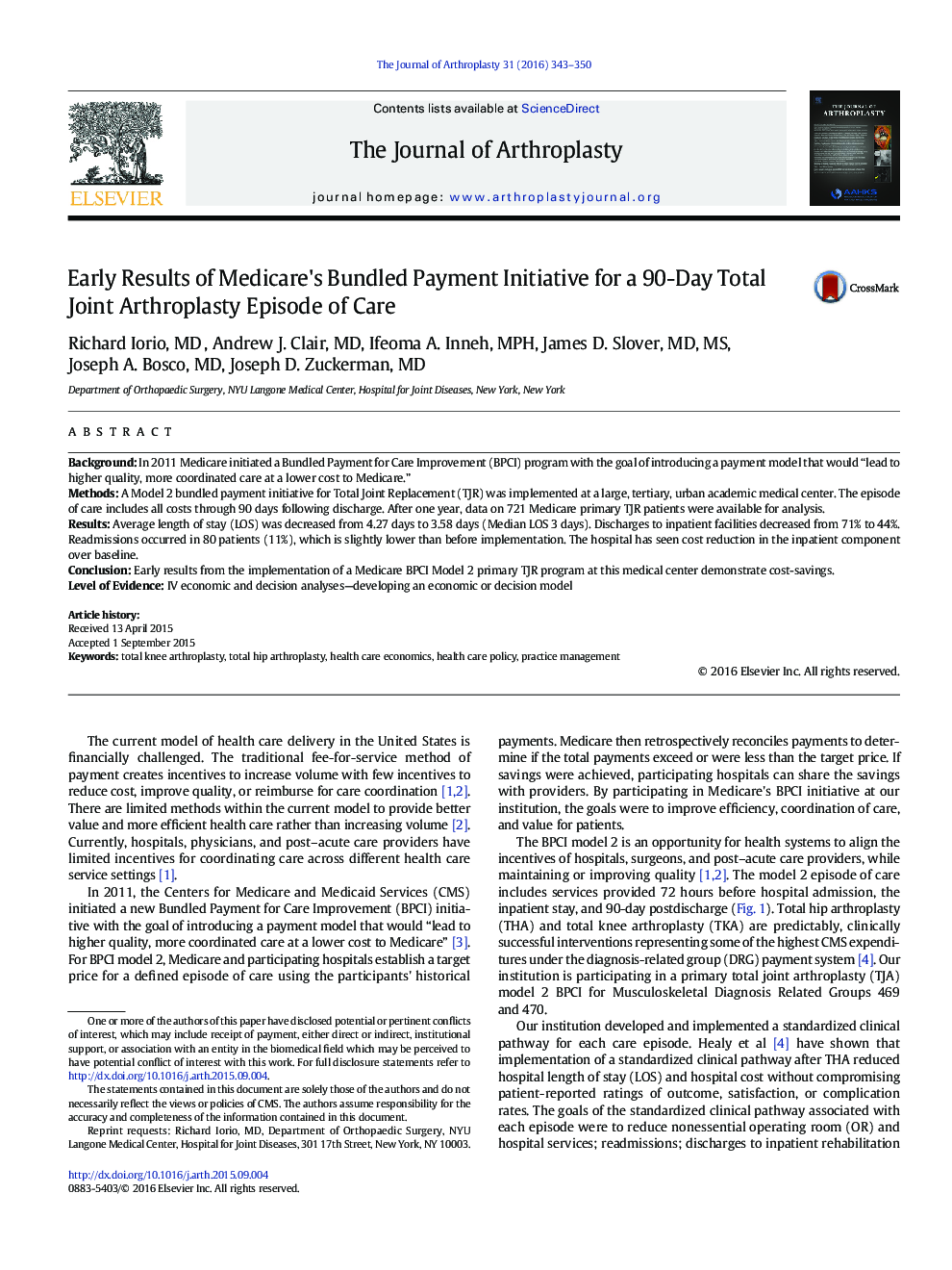| Article ID | Journal | Published Year | Pages | File Type |
|---|---|---|---|---|
| 4059913 | The Journal of Arthroplasty | 2016 | 8 Pages |
BackgroundIn 2011 Medicare initiated a Bundled Payment for Care Improvement (BPCI) program with the goal of introducing a payment model that would “lead to higher quality, more coordinated care at a lower cost to Medicare.”MethodsA Model 2 bundled payment initiative for Total Joint Replacement (TJR) was implemented at a large, tertiary, urban academic medical center. The episode of care includes all costs through 90 days following discharge. After one year, data on 721 Medicare primary TJR patients were available for analysis.ResultsAverage length of stay (LOS) was decreased from 4.27 days to 3.58 days (Median LOS 3 days). Discharges to inpatient facilities decreased from 71% to 44%. Readmissions occurred in 80 patients (11%), which is slightly lower than before implementation. The hospital has seen cost reduction in the inpatient component over baseline.ConclusionEarly results from the implementation of a Medicare BPCI Model 2 primary TJR program at this medical center demonstrate cost-savings.Level of EvidenceIV economic and decision analyses—developing an economic or decision model
